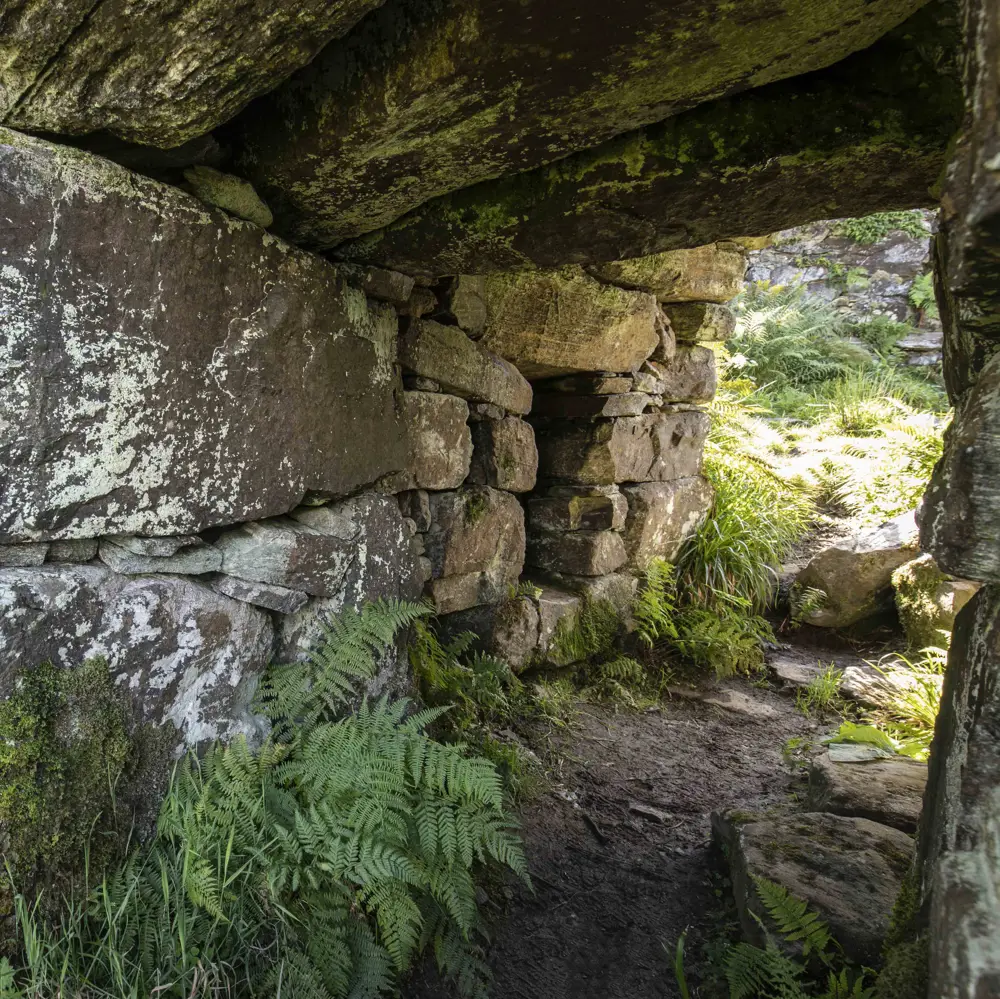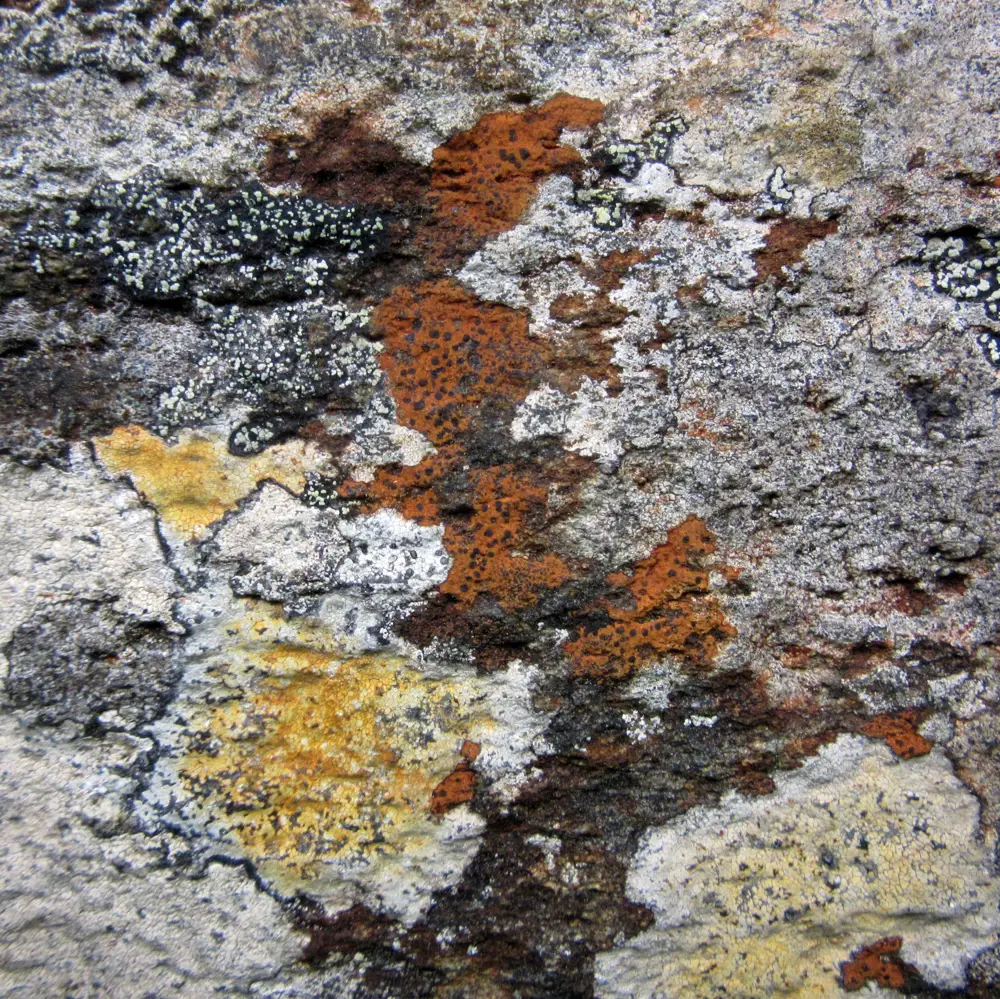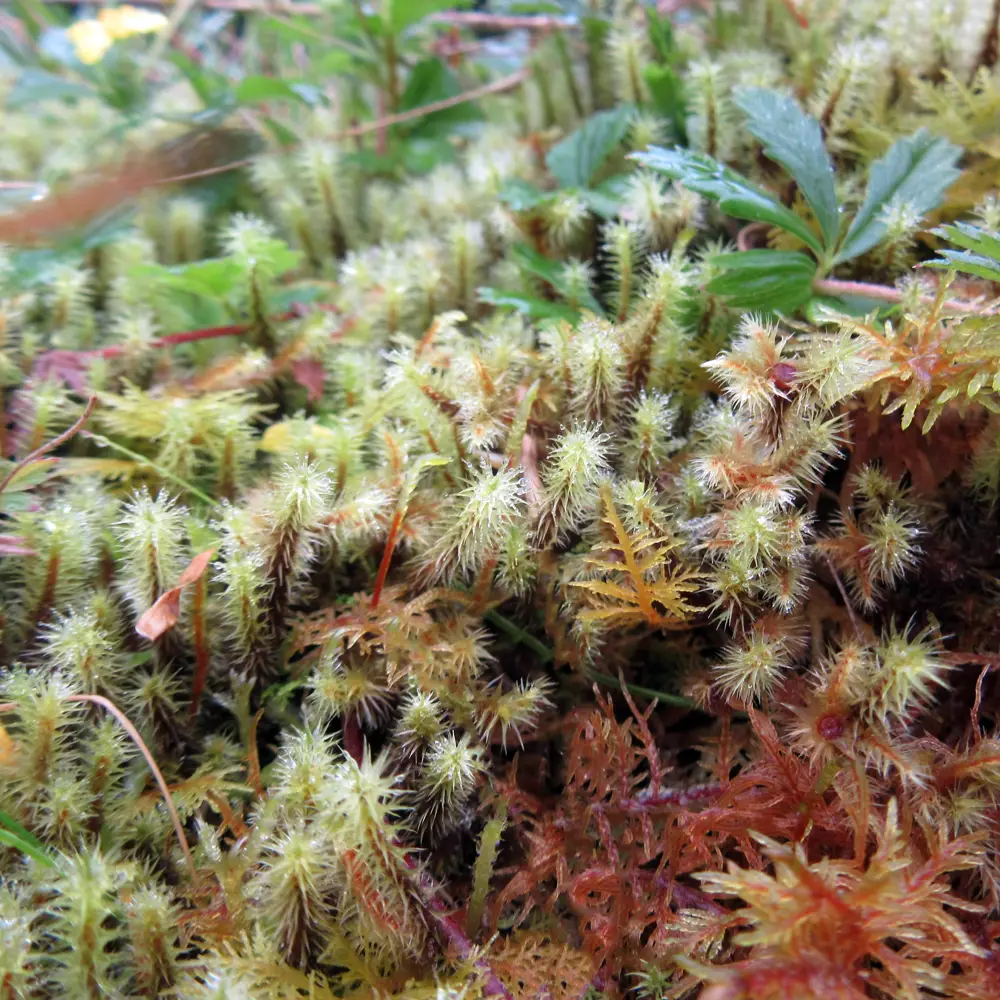Dig deeper: brochs and biodiversity

The broch of Caisteal Grugaig is a unique structural ecological niche situated in an area of amazing Atlantic Rainforest.
Could one of the finest brochs in Scotland be a home to biodiversity, just as it was once home to an Iron Age family?
The broch of Caisteal Grugaig sits in the Atlantic Rainforest zone, which runs along the west coast of Scotland, and is surrounded by a rainforest habitat rich in biodiversity. We recently commissioned a special lichen and bryophyte (mosses, liverworts, and hornworts) survey of the broch to see if the drystone structure – which is over 2000 years old – is host to any interesting species, and if we should take steps to care for them
Read all about brochs in To Build a Broch
Dr Petra Vergunst from Scottish Lichens recorded the lichens and bryophytes using detailed photography and by collecting samples. Both would be used to identify individual species back at the lab. In total, 31 species of lichen and 30 species of bryophyte were found on the broch. Most of these species are relatively common. However, Petra did find two lichen species that are nationally scarce and one rare species on the Scottish Biodiversity List.

The entrance passage forms a distinct structural ecological niche. It receives little direct sun and has particularly humid conditions, but there is enough light to allow the growth of lichens or bryophytes.
An ecoarchaeological survey
Our archaeologist Matt Ritchie sets the scene. “Brochs are a truly unique aspect of Scotland’s rich prehistoric tapestry,” he begins. “They were built around the end of the first millennium BC – distinctive circular drystone towers rising high from their foundations by employing a series of weight-saving and load-bearing galleries, stairways and passages within their double-skinned walls. They were likely commissioned by well-to-do productive households and constructed by experienced builders.”
“From an ecological perspective, a ruined structure like a broch constitutes a series of special ‘structural ecological niches’ that each offer opportunities for different lichen and bryophyte species”, Petra continues.
“The exposed vertical wall faces present large surfaces for lichens to attach to, while bryophytes like mosses may find the more humid conditions that they require on horizontal wall heads and ledges such as the scarcement, directly exposed to sun, wind, and rain, and from which rainwater runs off less quickly. Crevices also provide plenty of opportunities for those lichens and bryophytes that prefer rain-sheltered conditions. And the internal structural features such as the entrance passage, stairway and galleries receive little direct sun and have particularly humid conditions, but there is enough light to allow the growth of lichens or bryophytes," adds Petra.
“Within these main ecological niches are sub-niches formed by areas that are more exposed to the sun, wind and rain; and areas that are more protected, created by overhangs and crevices,” added Petra. “Darker, more enclosed areas include the guard chamber and cells within the walls of the broch, where there is not enough light to allow growth.”

This mosaic of crustose lichen species includes the usually yellow map-lichen Rhizocarpon geographicum, the sunflower yellow Porpidia melinodes and the rust-coloured iron-indicator Tremolecia atrata.
The wall faces
The wall faces form a vertical surface that water runs off quickly and where there is usually no soil formation. These conditions favour crustose lichens – a growth form that consists of a ‘crust’ that is attached to the underlying layer (known as the substratum) across its entire lower surface.
Higher up the walls, and exposed to the sun, wind and rain was a community of lichen crusts. Although not all these species had sufficient features to be identifiable, the impression was of a fairly standard community including Rhizocarpon geographicum, Rhizocarpon reductum and Lecanora intricata, with no mosses and liverworts. In some places, these crusts are characteristically rust-coloured, revealing lichen species like Tremolecia atrata, Rhizocarpon oederi and Porpidia melanodes.
The wall heads
The tops of the walls present an irregular horizontal surface that is also directly exposed to sun, wind and rain, but from which rainwater runs off less quickly; and, although less broad, the same is true for the ledges such as those formed by the scarcement.
The relatively damp conditions favour bryophytes (mosses and liverworts), and some of their lush carpets spill over the edge to grow on the vertical rock below. Many of the mosses on these horizontal substrata are common weft-forming species such as Racomitrium lanuginosum, Dicranum scoparium, Thuidium tamariscinum, Pleurozium schreberi and Hypnum cupressiforme. There was even a patch of Breutelia chrysocoma, a species that also grows in flushes and stream sides, and in turn confirming the water holding capacity of these horizontal surfaces.
Crevices
Where inner walls leant inwards, beneath overhangs created by ledges, and in crevices between building blocks, there were communities of mainly crustose lichens which prefer rain-sheltered conditions.
Typical lichen species of rain-sheltered conditions were the mosaic of Fuscidea gothoburgensis on the right of the entrance to the broch. Where rock below overhangs was drier, and in crevices, there would be species like the sulphurous yellow Psilolechia lucida and Lepraria lobificans. Where damp, the horizontal ledges in crevices would be home to bryophytes and liverworts that would spread from there.
 The bryophytes acrocarp Breutelia chrysocoma with some shoots of the pleurocarpous Pleurozium schreberi on top of the wall in the passageway.
The bryophytes acrocarp Breutelia chrysocoma with some shoots of the pleurocarpous Pleurozium schreberi on top of the wall in the passageway.
Structural features
The entrance passage, stairway and galleries created a humid space sheltered from the desiccating influences of sun and wind, and relatively devoid of vascular plants. These conditions were particularly favourable for bryophytes. The lush bryophyte carpets and cushions that had formed on the wall heads in the stairways and galleries also spilled over the edge to cover the wall faces [Like a luxurious Sultan’s Palace in nature! Ed].
Species in these carpets and cushions included the pleurocarpous mosses Thuidium tamariscinum, Thamnobryum alopecrum, Hylocomium splendens, Rhytidiadelphus loreus, the acrocarpous mosses Pogonatum urnigerum, Dicranum scoparium, Mnium hornum, and liverworts like Diplophyllum albicans, Lophocolea bidentata and Scapania gracilis. The scarcity of vascular plants here meant space for the acrocarpous moss Archidium alternifolium and the common thallose liverwort Pellia epiphylla. Although the stairway and galleries did not have a significant lichen cover, some Peltigera hymenina grew through the moss and liverwort cushions and there was even a particularly well-grown patch of the rare high rainfall species Sticta sylvatica.
Summary
Although one might expect that the great age of Caisteal Grugaig would have a positive effect on slow growing lichen and bryophyte diversity, encouraging the presence of rarer species in a way similar to that of old forest indicators, it is important to keep in mind that the broch is a dynamic structure. The broch was first excavated and cleared in 1889, and it has been studied and managed ever since, culminating in a programme of low key drystone masonry consolidation in 2018.
Considering that there is prime Atlantic Rainforest habitat surrounding it – with nearby woodland displaying characteristic temperate rainforest lichens and nearby streams and rock outcrops with many unusual bryophyte species – the broch seems to be notable due to its relative lack of lichen and bryophyte interest. However, because the broch is host to fairly standard drystone lichen and bryophyte species that are not found in the surrounding damp and organic rainforest habitat, the broch itself becomes a uniquely different structural ecological niche, and makes a significant contribution to the overall lichen and bryophyte diversity of the woodland.